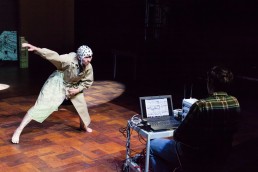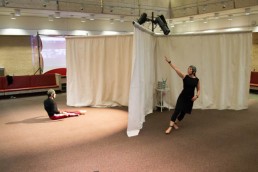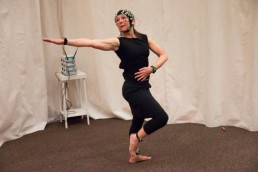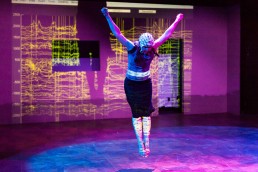



We used Mobile brain-body imaging (MoBI) technology to study the human improvisational creative process in the spirit of the “Exquisite Corpse”, an improvisational creative game created by the surrealists in the 1920s, three artists create a three-part art piece. The artists were equipped with 64 channel wireless EEG (2 channel EOG) and 3 inertial measurement units on forearms and head.
Wearing skullcaps equipped with sensors, UH dancer-choreographers played a variation of Exquisite Corpse, a collaborative, chance-based game made famous by the Surrealists in the 1920s — but they were dancing rather than drawing.
The event was part of a groundbreaking collaboration between Blaffer Art Museum, Houston-based artists, and the University of Houston’s Noninvasive Brain-Machine Interface Systems Laboratory, seeking clues to what happens in the brain as people create, perform, and contemplate art. For this event, we also partnered with the School of Theatre & Dance.